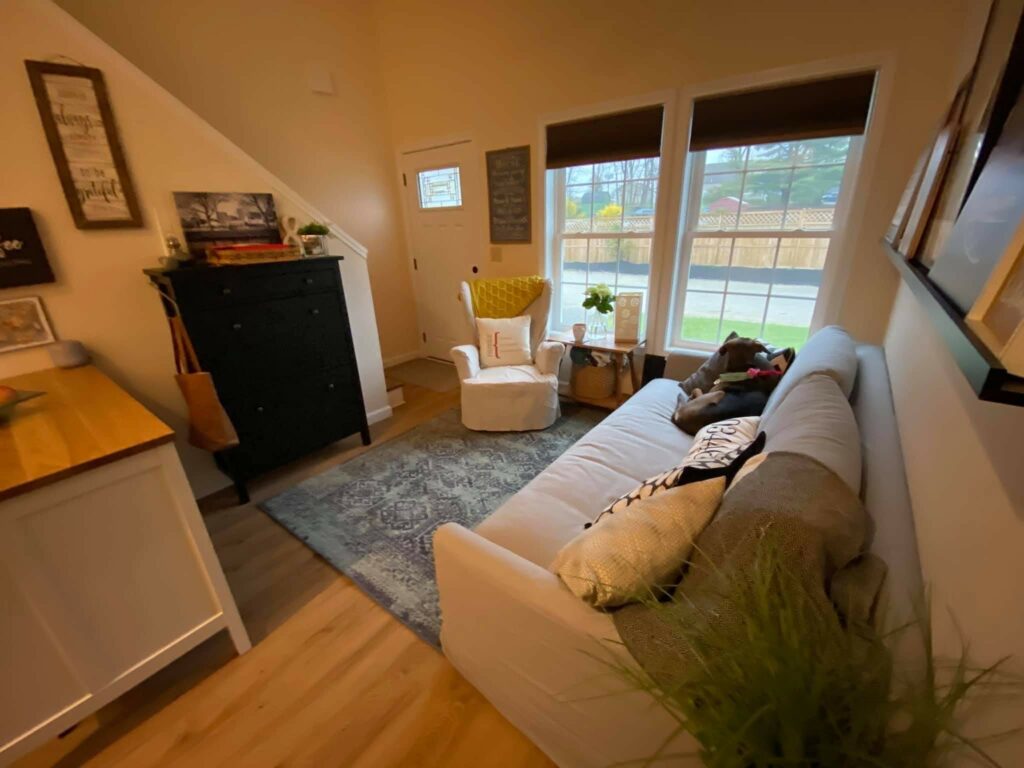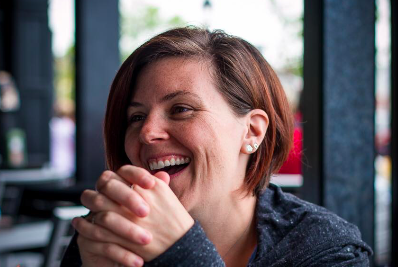A few months ago, we finally realized our dream of being tiny homeowners. Our tiny home is on the bigger side, clocking in at 749 square feet, 200 of which are our primary bedroom. Tiny living newbies ourselves, I thought it may be helpful to share 5 lessons I’ve learned about figuring out how to make your tiny home work for you with the least amount of heartburn.
Here are my top takeaways:
1. If it doesn’t have multiple uses, you don’t need it
I discovered very quickly that furniture items that can serve double duty are the only furniture items that truly work in our 749 square foot space. My coffee table has a lid and serves as blanket storage. Our main bookshelf also serves as our kitchen island/eating area. Our bedroom dresser isn’t just for clothes, it’s also where our television lives. Assess what you currently have, and really think about how the piece is serving you and your needs.
2. Need storage? Use your walls.
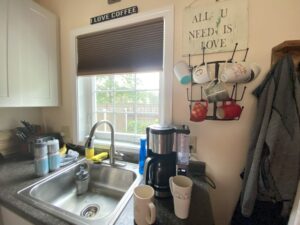
Instead of taking up floor space, wall-mounting things can help keep your space feeling open and tidy. Our tiny home has extremely high ceilings, so instead of letting that precious square footage go to waste, I have figured out creative solutions for putting those walls to work. I’ve got wall-mounted storage keeping our shoes off the floor and out of critical closet space, and to deal with office supplies and other items we need a fair amount of, I’ve mounted shelves to keep my desk space cleared off. We’ve got photo ledges doubling as book storage in my son’s room, and to keep kitchen cupboards organized, we’ve got a wall-mounted metal rack that holds drinking glasses and coffee mugs.
3. Non-traditional appliances are amazing
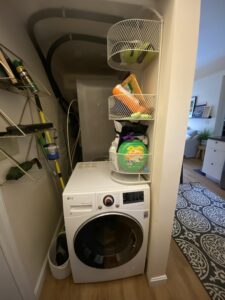
Our home is heated and cooled by mini-splits, our dishwasher is apartment-sized (read: VERY small but efficient), and we invested in a 2-in-1 washer/dryer combination unit that is only 1 piece of equipment so that the washing is done in the same machine that the drying is also completed. We also sold our old vacuum (a non-negotiable appliance for me since we have a dog that sheds the equivalent of a wool sweater daily), but replaced it with a robot vacuum that lives under our kitchen island, out of the way, and runs automatically every night. We had to really investigate which appliances would truly meet our needs. Don’t be afraid to hold off on getting something until you’ve lived in your tiny home for a while to see what is a lifestyle fit. Weeks of using a dustpan and broom left me realizing that for certain things (spills, area rugs) we still needed a vacuum. But giving it a try without first helped us understand it wasn’t an optional appliance for us.
4. Find heating/cooling experts
As I just mentioned, we have mini-splits as our singular heating and cooling solutions. So, on the first 95 degree day here in the Northeast when we needed to turn on our air and we were met with a small leak, we knew we couldn’t fix it ourselves. Enter the experts. Mini-splits are excellent and efficient, when they work properly, but if even one thing wasn’t done correctly when installed, all heck can break loose. We found a heating/cooling expert who works on nothing but our type of mini-split. In the course of 1 hour he diagnosed and fixed a problem we never could have imagined or found on our own. Just because we live in a tiny house and troubleshoot most issues ourselves, doesn’t mean we don’t call in the proper troops when needed. Know your limits, and know when it’s going to save you time and money to just hire a pro.
5. Don’t be afraid to downsize your stuff further
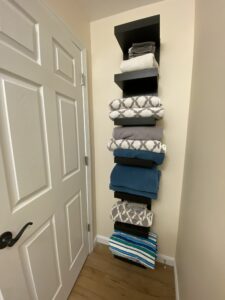
After our first full month living here, I further downsized our belongings. Were we really using all of the kitchen stuff we own? Or were we just using 4 pots and pan variations, leaving the other pots and pans to take up space and gather dust? Turns out, we have no need for all of that equipment. We also moved our furniture and storage items around a few times before we were totally happy with the layout of our main floor, and as such, we discovered that an extra nightstand worked better next to our sofa (because it had drawers and storage) than a small table with no storage available. So, we got rid of the table offering it up in a local Buy Nothing group. And, even though we majorly downsized the amount of clothing we own, it took us 2 additional purges and living through both cold and hot seasons (and everything between) to fully examine what we were (or weren’t) wearing.
If you’re afraid you’ll get rid of something you may need (I have a hard time purging, worrying I may need a certain tool or thing in the future), there are many resources you can turn to in order to fill the gaps. Find your local tool library, or check out your local co-housing resources. Even if you don’t live in a co-housing community, the communities are great places to borrow models and ideas for sharing from.
You won’t have your tiny living essentials fully nailed down right away if you’re new to the tiny lifestyle, and that’s OK. If you commit to being open and flexible as to what your needs really are though, you’ll eventually land smack dab in the middle of your tiny home, with exactly everything you need and nothing you don’t.
